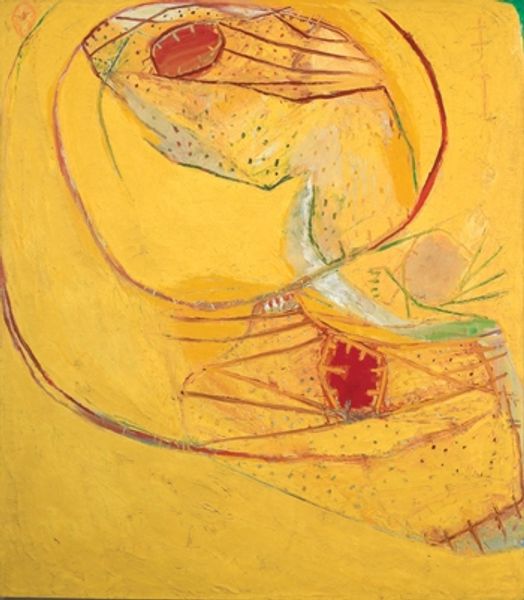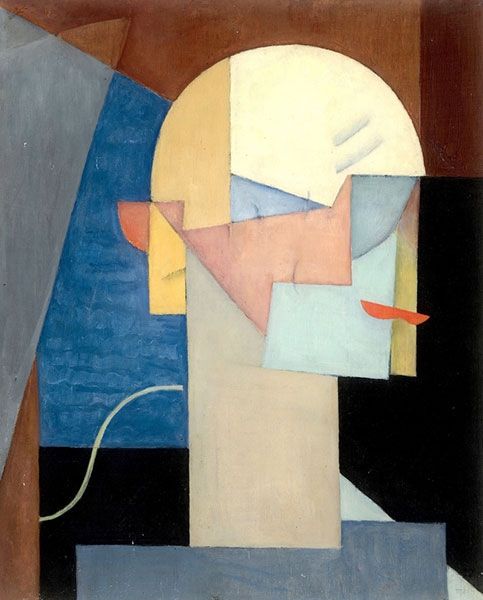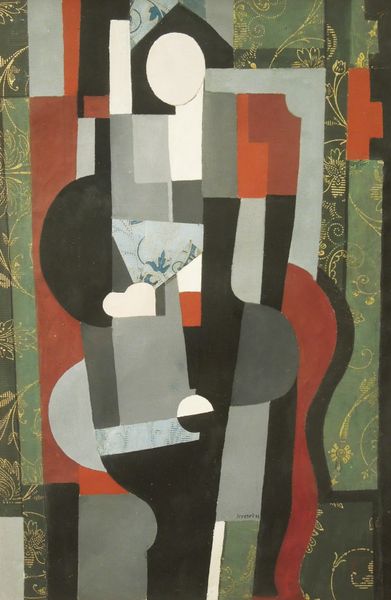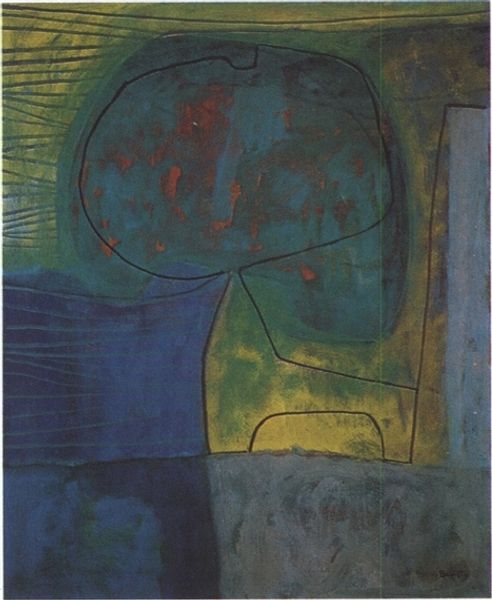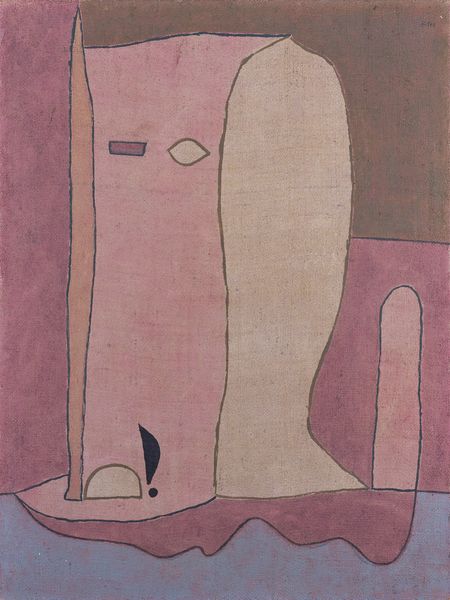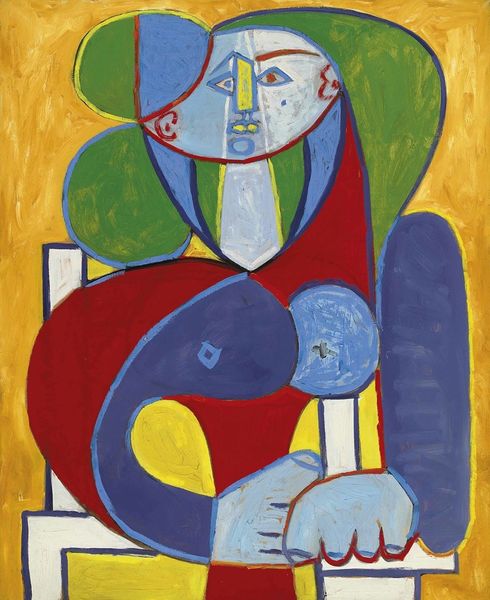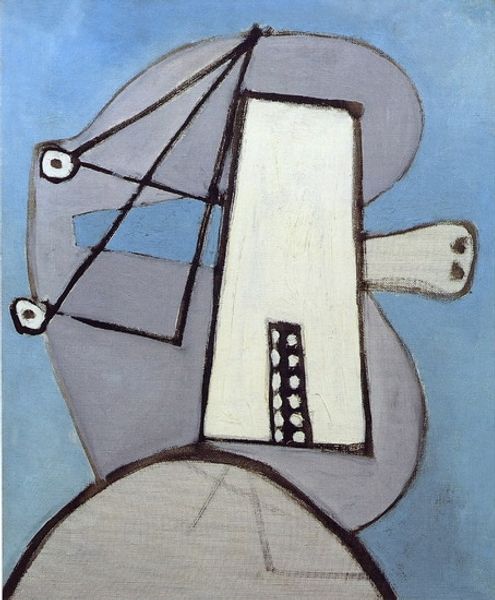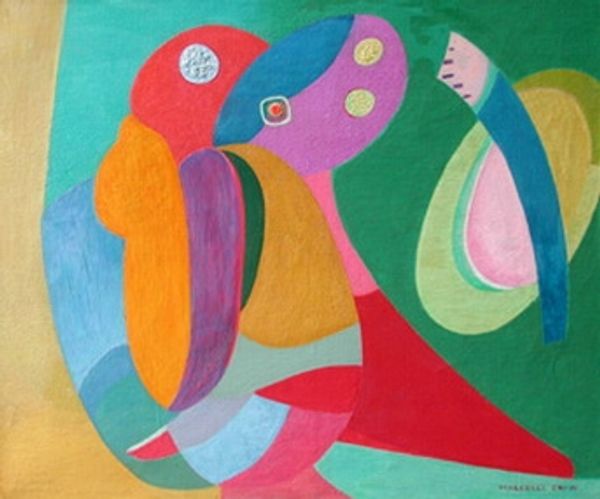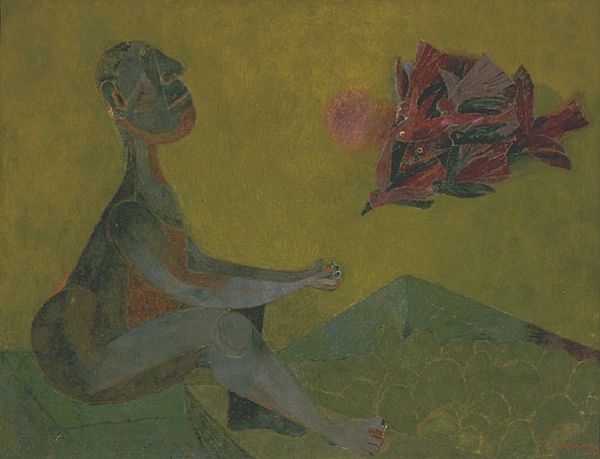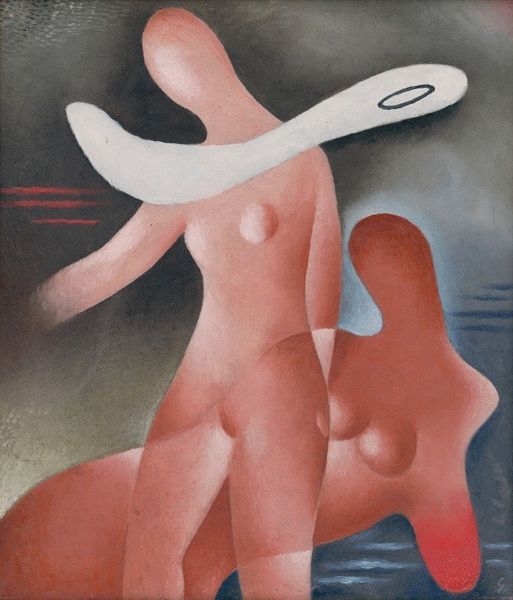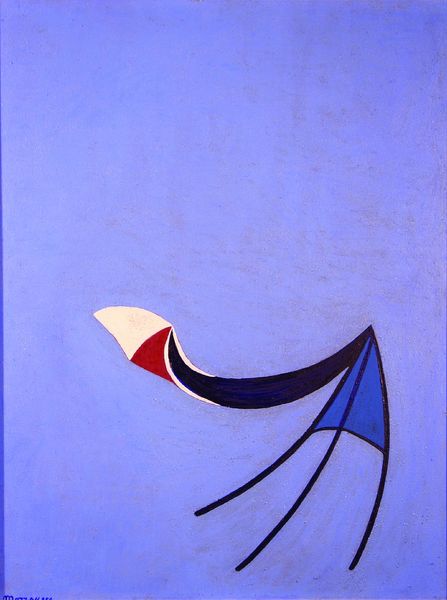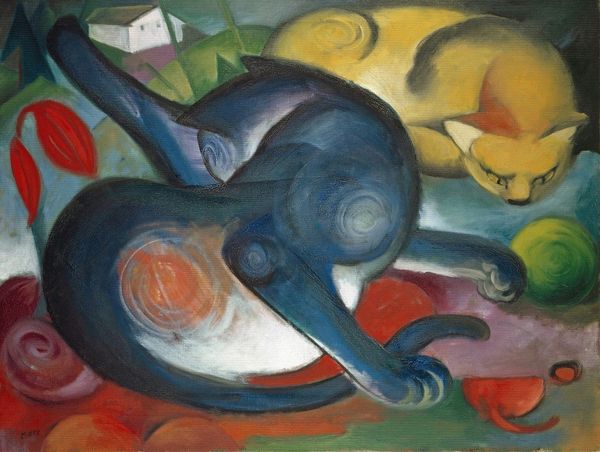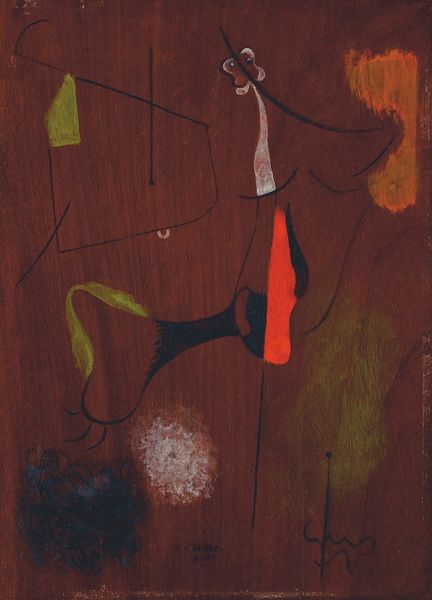
painting, watercolor
#
abstract-expressionism
#
organic
#
water colours
#
painting
#
watercolor
#
abstraction
#
watercolor
Copyright: William Baziotes,Fair Use
Curator: Here we have William Baziotes’s 1950 watercolor piece, "Moon Animal". Editor: It feels incredibly ethereal, doesn’t it? Almost like a dreamscape washed in cool blues and purples with this bizarre central pink figure. Curator: Baziotes, deeply embedded in the abstract expressionist movement, aimed to explore the subconscious mind. Think of this piece as a visual manifestation of automatism, where he let his hand guide the forms almost unconsciously. The social context was the post-war anxiety with many artists attempting to channel deeper and primordial understanding of humanity. Editor: I appreciate the evocation of the "primordial," but "anxiety" feels like too simple a read of what many experienced in this era. I see also hope and reinvention, like what we witness from decolonizing nations and evolving sexual and racial identities. Is "Moon Animal" trapped by its time, or transcending? Curator: Baziotes consistently grappled with reconciling conscious intent with the spontaneous, and often unplanned, act of creation. He referred to his style as “biomorphic abstraction,” which indicates he sought a harmony between abstract forms and those reminiscent of organic life. Editor: Right. Looking at it from an intersectional perspective, what strikes me are the creature’s ambiguities. Genderless and otherworldly, it challenges easy categorization and prompts thoughts on hybridity. Is it alien or a projection of our own fractured selves? It also makes me wonder, what kind of art galleries displayed abstract art such as "Moon Animal"? Who had access to it? Curator: Well, that's complex! Many new art galleries started in that period, giving way to avant-garde movements like Abstract Expressionism. Artists themselves managed co-ops, which speaks to both the artist-led and social contexts. So, Baziotes and his colleagues certainly made an effort to showcase these works. Editor: Seeing those intentionalities helps appreciate the nuance, beyond mere anxiety. I might carry an image of that strange, searching eye for some time, trying to sort out what I really saw here. Curator: Indeed, a complex interplay of control and chance within postwar expression. Its enduring intrigue is the artist's refusal to let us arrive at a settled meaning, always allowing for the fluidity of feeling and perception.
Comments
No comments
Be the first to comment and join the conversation on the ultimate creative platform.

